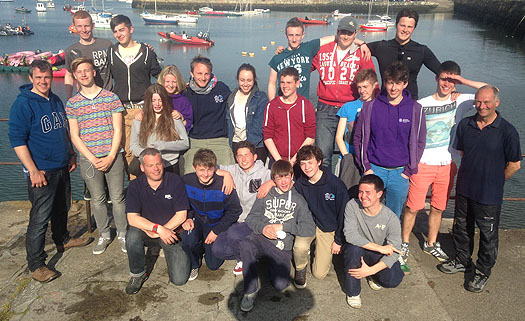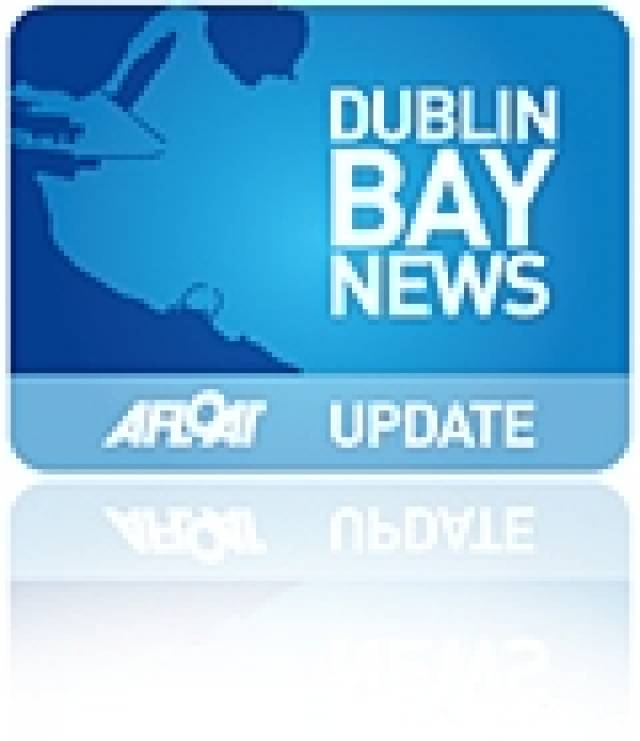#insc – It's been a busy last few weeks and weekends in the Irish National Sailing School based on the West Pier in Dun Laoghaire Harbour writes centre manager Kenneth Rumball. After wrapping up a successful DBSC Spring Series in the 1720 Sportsboats as part of our winter racing programme, our instructor trainees for 2014 were nearing their pre-entry exam for their Royal Yachting Association Dinghy Instructor Course. Not only were some candidates going forward for their RYA qualification but we also have been running many Irish Sailing Association Instructor Courses. If this wasn't enough for centre connections with ISA racing and also the Irish Fireball class, the Irish Fireball association held their class training programme in the INSS clubhouse. Coaches Simon Potts (and Kenneth Rumball) had the class out practising and fine honing a manner of skills to get themselves around the race track that bit quicker.
We are delighted to announce that for our second year in succession all 18 candidates on our RYA instructor course passed with flying colours. RYA traines, Alan Jones, Chris Gaskin, Nic Wymer and Geoff Stones all couldn't believe the standards of our ever improving junior sailors. With fantastic conditions, the RYA instructor course made the most of the weather with 'dummy' sessions being run every day on the water. After a thorough pre-assessment and 5 long days of making the transition from student to instructor, we are delighted to announce that all 18 candidates are now RYA dinghy instructors. The group will be taking a break after their long week before taking up instructing positions on our junior summer programmes this summer. The picture below shows the happy group just after receiving the news they successfully completed the course.

Running alongside this course was our second ISA instructor course of the year. Under pressure for the course to actually run and be a success, we are hugely grateful to Eddie English of SailCork.com for freeing up his busy schedule to come and run our course up in Dublin.
Finally if our instructor courses, coaching weekends and racing weren't keeping us busy enough, we have had some fantastic weekends of teaching courses for adults with almost 20 newly qualified sailors already this year... some of these sailors are already sailing in our club system allowing them to keep their new found hobby alive. But don't forget the Junior sailors who with the good weather we have had over the last week had a fantastic Easter sailing course in the warmest conditions so far this year, though some regretted the inevitable jump into the sea once they found out the sea temperatures haven't quite risen yet!
All in all we have had a fantastic start to the year and are looking forward to a fantastic summer ahead.

























